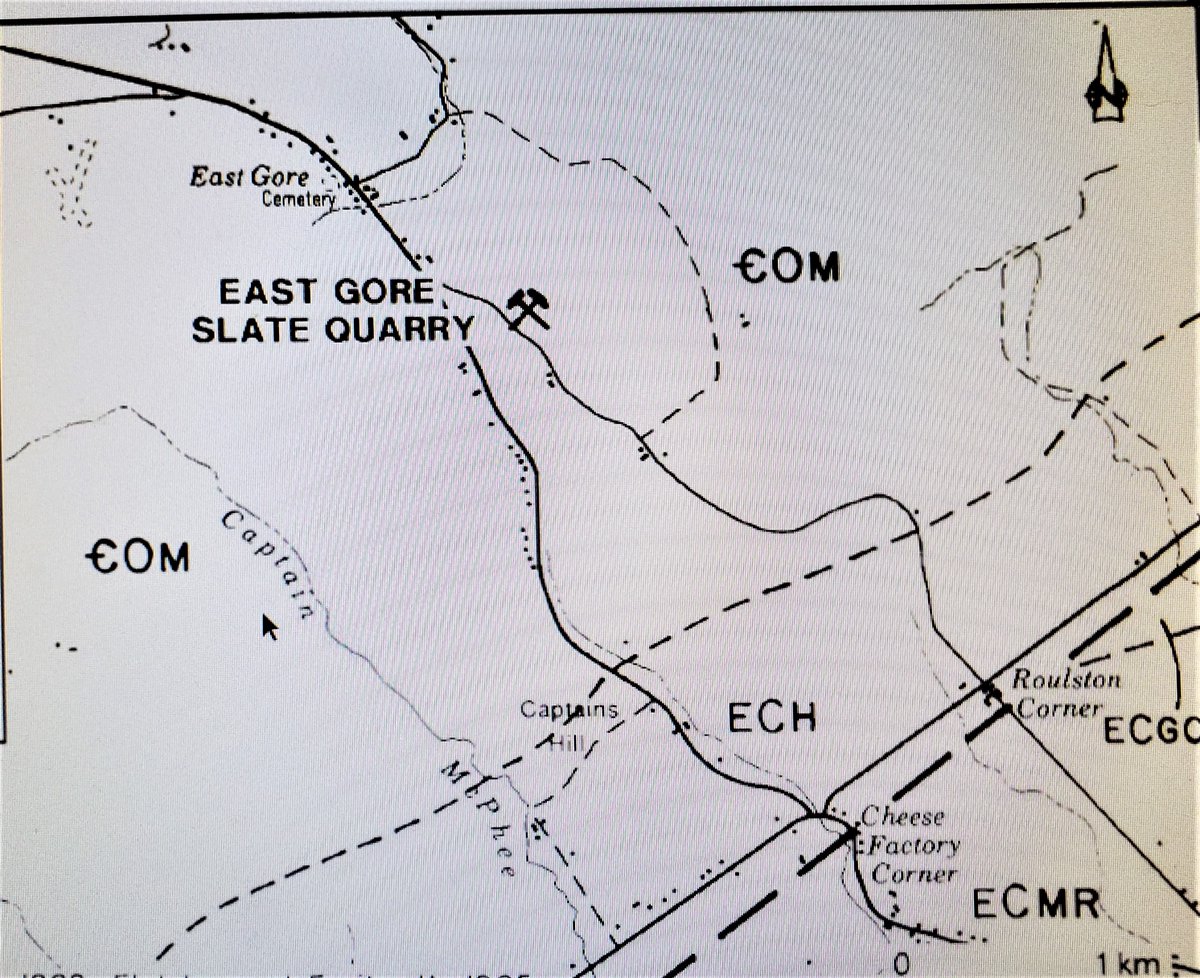The East Gore Slate Quarry in #EastHants likely started operating in the mid-1800s and operated into the early 1900s.
Here's the story of the quarry and how it's connected to Courthouse Hill and the Rawdon #gold mines!
#nspoli #novascotia @EastHantsNS #hants

Here's the story of the quarry and how it's connected to Courthouse Hill and the Rawdon #gold mines!
#nspoli #novascotia @EastHantsNS #hants


The historical quarry is on turn-of-the-century geological maps but there are no official records of its production, so precise dates aren’t available.
A mill was built nearby to turns its slate into roof shingles.
#nspoli #novascotia #easthants #hants
A mill was built nearby to turns its slate into roof shingles.
#nspoli #novascotia #easthants #hants

Today there is a modern slate quarry directly across Slate Quarry Road from the historical quarry.
One of the many old buildings that used East Gore slate for its roof was the courthouse on what we now call Courthouse Hill, but which was once known as Judgement Hill.
#nspoli

One of the many old buildings that used East Gore slate for its roof was the courthouse on what we now call Courthouse Hill, but which was once known as Judgement Hill.
#nspoli


The courthouse was a wooden building built in 1866 and court proceedings and council meetings for the municipality were held in it from 1867-1907.
#nspoli #novascotia #easthants #hants
#nspoli #novascotia #easthants #hants

The courthouse was sold to the Orange Lodge of Gore in 1916 and The Sons of Temperance are believed to have been using the building as their division hall around 1941.
The courthouse burned to the ground on July 22, 1956.
#nspoli #novascotia #easthants #hants
The courthouse burned to the ground on July 22, 1956.
#nspoli #novascotia #easthants #hants

A monument was built on Courthouse Hill in 1980 to commemorate the courthouse and the centennial of the incorporation of @EastHantsNS. The monument explains that on a clear day, 5 counties are visible from the site: #Hants, #Kings, #Colchester, #Cumberland and #Pictou.
#nspoli
#nspoli

Courthouse Hill is part of the #RawdonHills, which extend southwest from it. The Rawdon Hills’ slate bedrock formed about 450 million years ago, around the time when the first land plants appeared on Earth.
#nspoli #novascotia #easthants #hants
#nspoli #novascotia #easthants #hants

Quartz veins, often containing gold, are found throughout the slate bedrock and the #RawdonHills saw great deal of historical #gold mining.
#nspoli #novascotia #easthants #hants
#nspoli #novascotia #easthants #hants

The area around the #RawdonHills is mostly sandstone +limestone bedrock that was eroded by glaciers during ice ages, the last of which ended about 12,000 years ago. Sandstone and limestone are softer rocks that eroded more easily than the harder slate of the Rawdon Hills.
#nspoli
#nspoli

As a result, the #RawdonHills are the high point in the area and are surrounded by eroded, low-lying terrain. This gives us the view of five counties from Courthouse Hill.
#nspoli #novascotia #easthants #hants
#nspoli #novascotia #easthants #hants

• • •
Missing some Tweet in this thread? You can try to
force a refresh



























